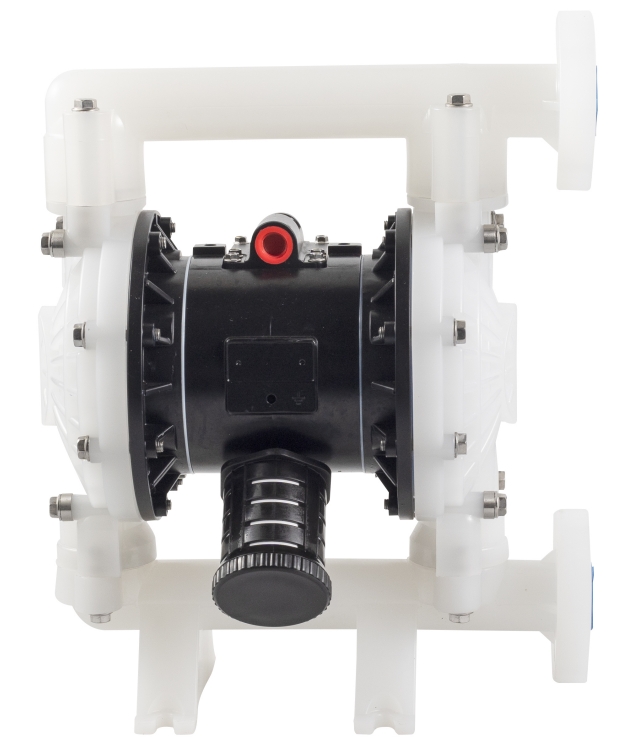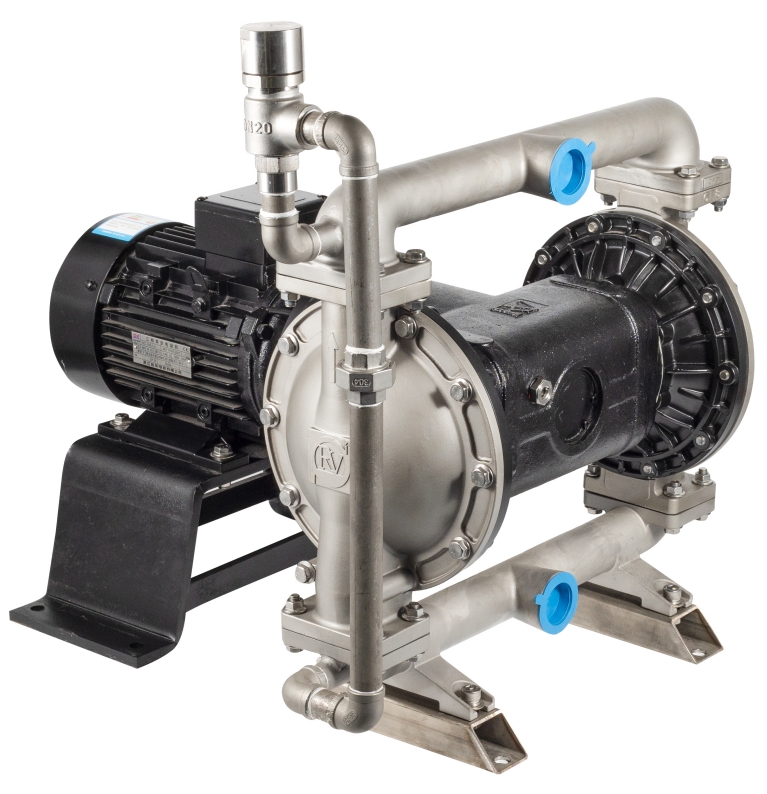

Multiple factors need to be considered which including their working principles, energy consumption characteristics, and actual application scenarios while comparing which is more energy-efficient depends on pneumatic diaphragm pumps or electric diaphragm pumps.
A.Energy-saving characteristics of pneumatic diaphragm pumps
1. **Working principle**: Pneumatic diaphragm pumps use compressed air as a power source, and form volume changes through the reciprocating motion of the diaphragm to achieve medium delivery. This direct drive method reduces energy loss in the intermediate links.
2. **Energy efficiency performance**:
- **High compressed air utilization rate**: Pneumatic diaphragm pumps can efficiently utilize compressed air with almost no energy loss.
- **High volumetric efficiency**: Due to good sealing, the piston in the pump cylinder can achieve precise volume changes during reciprocating motion, and the volumetric efficiency is high.
- **Good dynamic balance**: The structural design is reasonable, the vibration and noise are low during operation, and there is no inertial force, which is conducive to reducing energy consumption.
3. **Energy-saving characteristics**: Pneumatic diaphragm pumps do not require electricity or mechanical transmission devices, so their energy-saving advantages are particularly obvious in situations where there is no power supply or the cost of electricity is high. In addition, it can also avoid the heat loss and mechanical wear that may be generated during the operation of the motor, which may lead to increased energy consumption.
B.Energy-saving characteristics of electric diaphragm pumps
1. **Working principle**: The electric diaphragm pump drives the pump body through the motor to realize the medium transportation. Its energy efficiency and energy-saving characteristics are closely related to the efficiency of the motor, the speed regulation method and the intelligence of the control system.
2. **Energy efficiency performance**:
- **Variable frequency speed regulation energy saving**: Some electric diaphragm pumps adopt variable frequency speed regulation technology, which can adjust the pump speed according to actual needs, thereby achieving energy saving effect.
- **Intelligent control energy saving**: Automatically adjust the operating parameters through the intelligent control system, such as adjusting the pump speed or valve opening according to pressure changes, etc., to further reduce energy consumption.
3. **Energy consumption characteristics**: Although the electric diaphragm pump has stable and reliable operation characteristics when the power supply is sufficient, its energy consumption is relatively high, especially when the motor efficiency is not high or the speed regulation method is unreasonable.
Comprehensive comparison
In terms of energy saving, pneumatic diaphragm pumps usually have more obvious advantages. This is because it directly uses compressed air as a power source, reducing energy losses in the intermediate links, and there is no additional energy consumption caused by electricity or mechanical transmission devices. However, in an automatic control system with sufficient power supply and strict requirements on flow and pressure, an electric diaphragm pump may be more suitable, and its energy-saving technologies such as variable frequency speed regulation and intelligent control can also reduce energy consumption to a certain extent.
Therefore, it is impossible to say which of the pneumatic diaphragm pump and the electric diaphragm pump is more energy-efficient, but it is necessary to choose the most suitable pump type according to the specific application scenario and needs. In situations where the air source is sufficient and the energy-saving requirements are high, the pneumatic diaphragm pump may be more energy-efficient; in situations where the power supply is sufficient and the flow and pressure control accuracy requirements are high, the electric diaphragm pump may be more suitable.